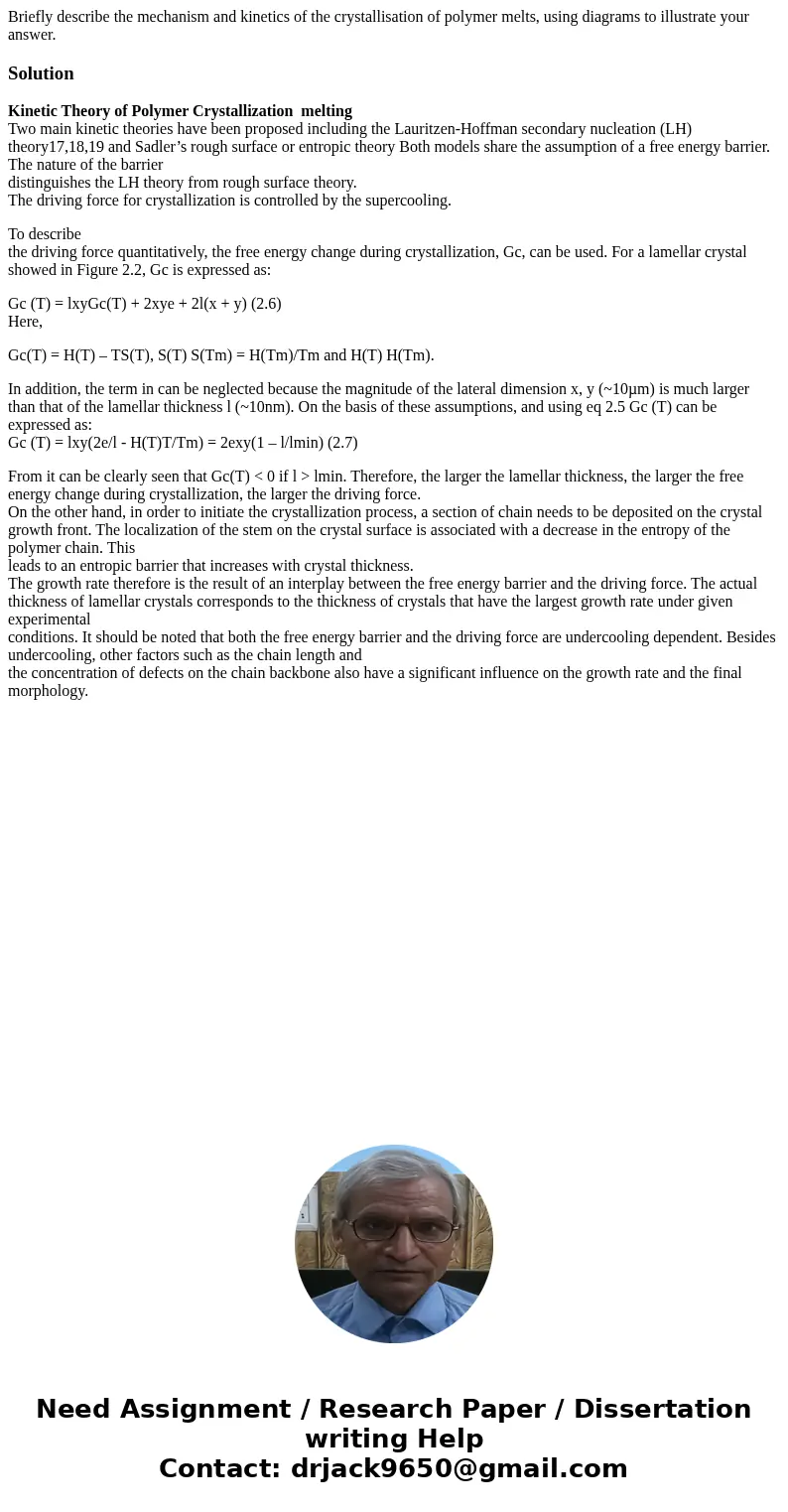Briefly describe the mechanism and kinetics of the crystalli
Briefly describe the mechanism and kinetics of the crystallisation of polymer melts, using diagrams to illustrate your answer.
Solution
Kinetic Theory of Polymer Crystallization melting
Two main kinetic theories have been proposed including the Lauritzen-Hoffman secondary nucleation (LH) theory17,18,19 and Sadler’s rough surface or entropic theory Both models share the assumption of a free energy barrier. The nature of the barrier
distinguishes the LH theory from rough surface theory.
The driving force for crystallization is controlled by the supercooling.
To describe
the driving force quantitatively, the free energy change during crystallization, Gc, can be used. For a lamellar crystal showed in Figure 2.2, Gc is expressed as:
Gc (T) = lxyGc(T) + 2xye + 2l(x + y) (2.6)
Here,
Gc(T) = H(T) – TS(T), S(T) S(Tm) = H(Tm)/Tm and H(T) H(Tm).
In addition, the term in can be neglected because the magnitude of the lateral dimension x, y (~10µm) is much larger than that of the lamellar thickness l (~10nm). On the basis of these assumptions, and using eq 2.5 Gc (T) can be expressed as:
Gc (T) = lxy(2e/l - H(T)T/Tm) = 2exy(1 – l/lmin) (2.7)
From it can be clearly seen that Gc(T) < 0 if l > lmin. Therefore, the larger the lamellar thickness, the larger the free energy change during crystallization, the larger the driving force.
On the other hand, in order to initiate the crystallization process, a section of chain needs to be deposited on the crystal growth front. The localization of the stem on the crystal surface is associated with a decrease in the entropy of the polymer chain. This
leads to an entropic barrier that increases with crystal thickness.
The growth rate therefore is the result of an interplay between the free energy barrier and the driving force. The actual thickness of lamellar crystals corresponds to the thickness of crystals that have the largest growth rate under given experimental
conditions. It should be noted that both the free energy barrier and the driving force are undercooling dependent. Besides undercooling, other factors such as the chain length and
the concentration of defects on the chain backbone also have a significant influence on the growth rate and the final morphology.

 Homework Sourse
Homework Sourse